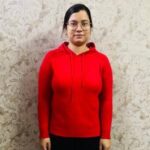Osteopenia Diet Plan
Strengthen Your Bones with Our Osteopenia Diet Plans
Get Your Custom Diet Plan to Help Improve Bone Density
Our personalized diet plans focus on bone density building foods to support your journey in managing osteopenia.
Why do you need a Diet for Osteopenia?
Osteopenia, characterized by lower than normal bone density, can increase the risk of fractures and other bone-related issues. Proper nutrition is the only safe and effective way to improve bone health. At Healthy2Bfit, we create customized diet plans with foods that support bone density, helping you manage osteopenia effectively.
Benefits of Our Osteopenia Diet Plans

Bone Health
Includes foods rich in calcium, vitamin D, and other nutrients essential for bone health.

Customized Plans
Custom diet plans to meet your specific health needs and lifestyle.

Expert Guidance
Professional advice from experienced dieticians specializing in bone health.

Balanced Nutrition
Comprehensive meal plans that ensure you receive all necessary nutrients.
How Our Osteopenia Diet Program Works

Initial Consultation
Discuss your health status, dietary habits, and goals with our dieticians.

Personalized Diet Plan
Receive a diet plan focused on foods that build bone density.

Regular Follow-ups
Continuous support and adjustments to your diet plan as and when needed.

Health Monitoring
Track your progress and improve bone health with our guidance.
Sample Osteopenia Diet Plan
Day 1 Example:
Breakfast : Ragi porridge with fortified milk and a handful of almonds.
Mid-Morning Snack : A bowl of mixed berries.
Lunch : Spinach and paneer curry with whole wheat roti and a side of dal.
Evening Snack : Carrot sticks with hummus.
Dinner : Grilled tofu with quinoa and steamed broccoli.
Note: Each diet plan is customized to meet your specific health needs. Connect with us on Instagram now!

Success Stories from Our Clients

Neeraj Sharma

Roop Matharoo

Rajni Kamboj

Pooja Mahajan

Lakhwinder kaur

Kirti Wandile-Chandankhede

Gurpreet Ghumaan

Daman Bindra
Make Your Bones Stronger With Healthy and Wholesome Food
Get Your Free Consultation Now
Start improving bone health today with our personalized diet plans.
Book Appointment Contact UsFrequently Asked Questions
Our diet plans include foods rich in calcium, vitamin D, magnesium, and other essential nutrients that support bone health.
Yes, our diet plans are designed to help improve bone density by focusing on nutrient-rich foods that support bone health.
We will regularly review and update your diet based on your progress and any changes in your health status.
Yes, our diet plans are designed to meet the needs of individuals of all ages who are managing osteopenia.
